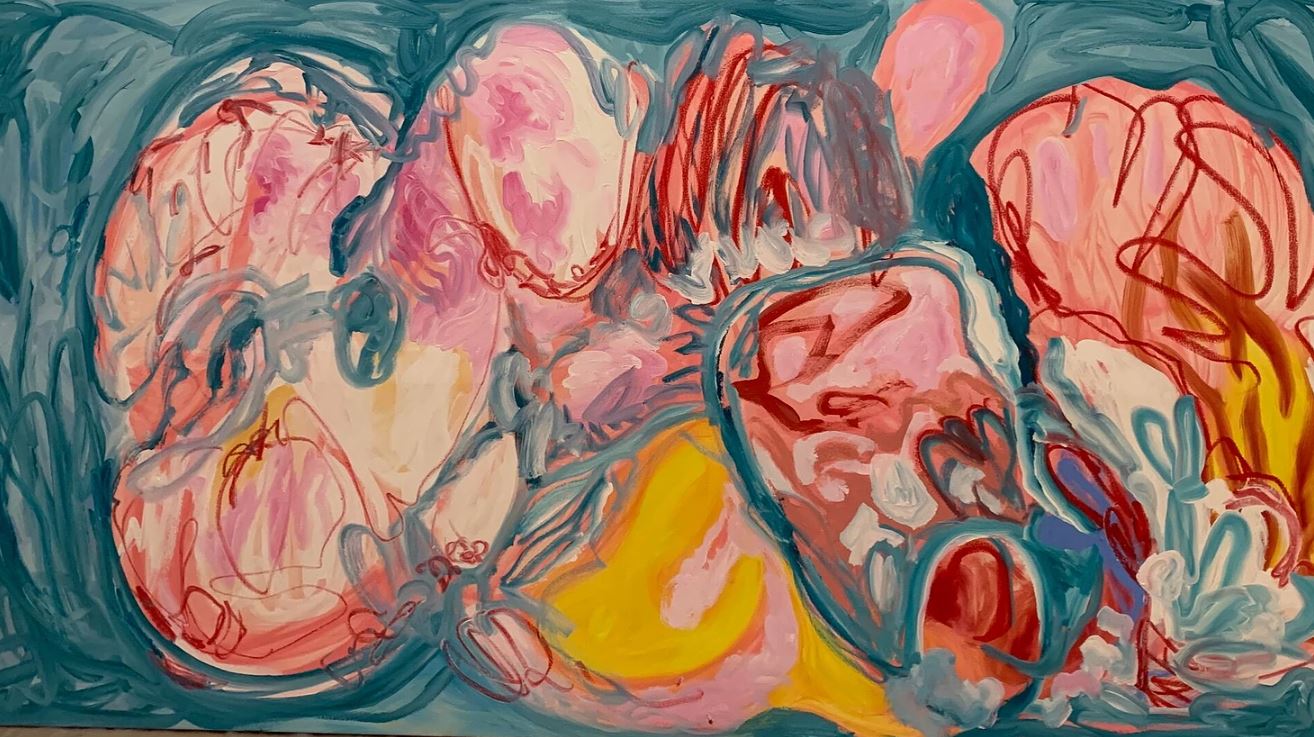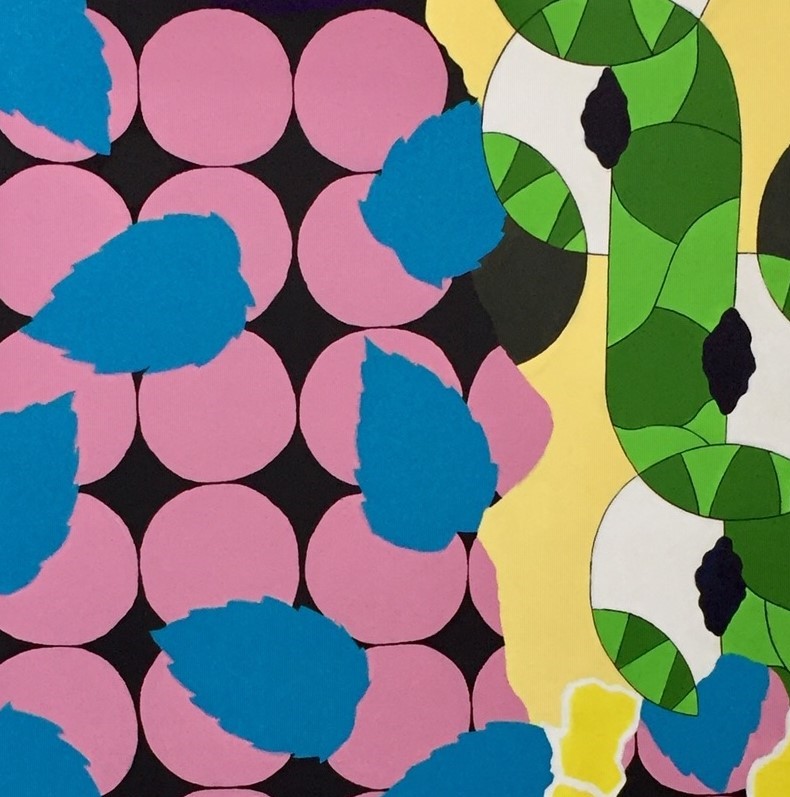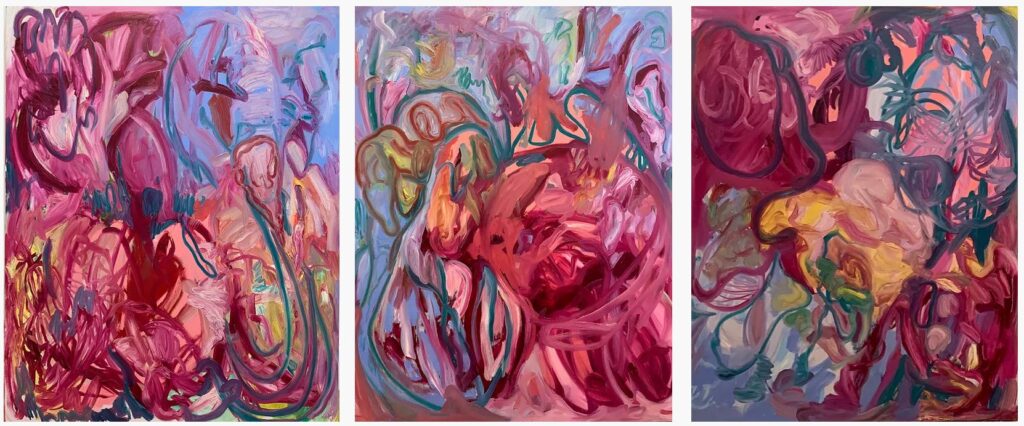
Most artists paint what they see, but Ceviga Frahm paints what she senses. Ceviga has always integrated her synaesthetic condition – Extrasensory Perception (ESP) – within her painting process to create instinctively rhythmic abstractions. She joins artists, including Vincent van Gogh and Wassily Kandinsky, who have been inspired by their synaesthesia, translating it into powerfully expressive paintings. Defined by lyrical lines and searing colours, Ceviga’s multi-layered compositions immerse the viewer in her inner worlds.
Originally from South Korea, London-based Ceviga’s career in the art world spans over two decades. She started exhibiting in New York during the 90s and, more recently, has been awarded a distinction for her MA Fine Art degree at Chelsea College of Art.
Ceviga is now preparing to show at Saatchi Gallery, as part of the 2020 START Art Fair (21-25 October), represented by the Skipwiths Gallery. She will also feature in the group show of the Korean Eye Programme 2020/21 during this event.
Ahead of the art fair, I caught up with Ceviga to find out more about her process of dancing with paint and poignant new series, ‘Home’.
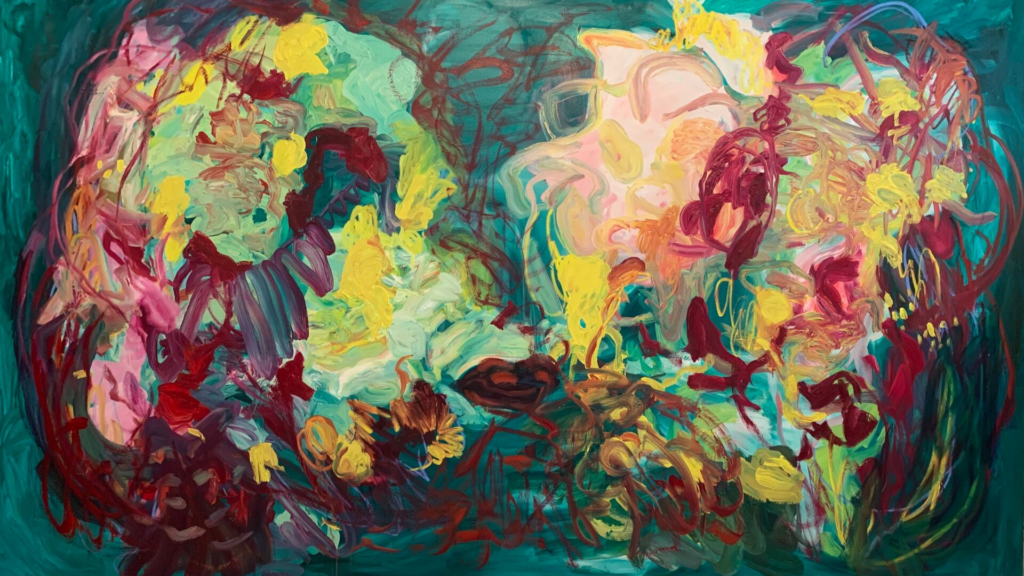
How does synaesthesia manifest for you?
More often than not, I will get a synaesthesia between my ears to cerebrum, anxiety, questionable unimaginable lines or forms that continuously or persistently emerge in me like hallucinatory moments. Different colours hold different emotional charge, weight, intensity.
Reaching a balance is always a challenge and a game for me. The way I combine colours, brushstrokes, shapes and textures onto the canvas surface is always due to a state of flow, a sort of dynamic but instinctual rhythm that my hand and my mind are driving and are driven by at the same time.
How did this new series of artwork come about? What is its relation to your previous artwork?
This new series of paintings is entitled ‘Home’ – home as an overarching concept harmoniously integrating body, mind and soul. My paintings and installations have always been created at the intersection of my own imagination and my sensorial experience of the outer world.
Whereas my previous series of artwork (‘Symbiosis’, 2019) highlighted the symbiosis of sounds, colours, memories and emotions in a very expressive way, referring to the universal chemistry of our bodies and of the universe that we live in, this new collection of paintings focus rather on the private ground – home. I’m now interested in the visual exploration of home as everyday language – a house for my thoughts, a house of existence.
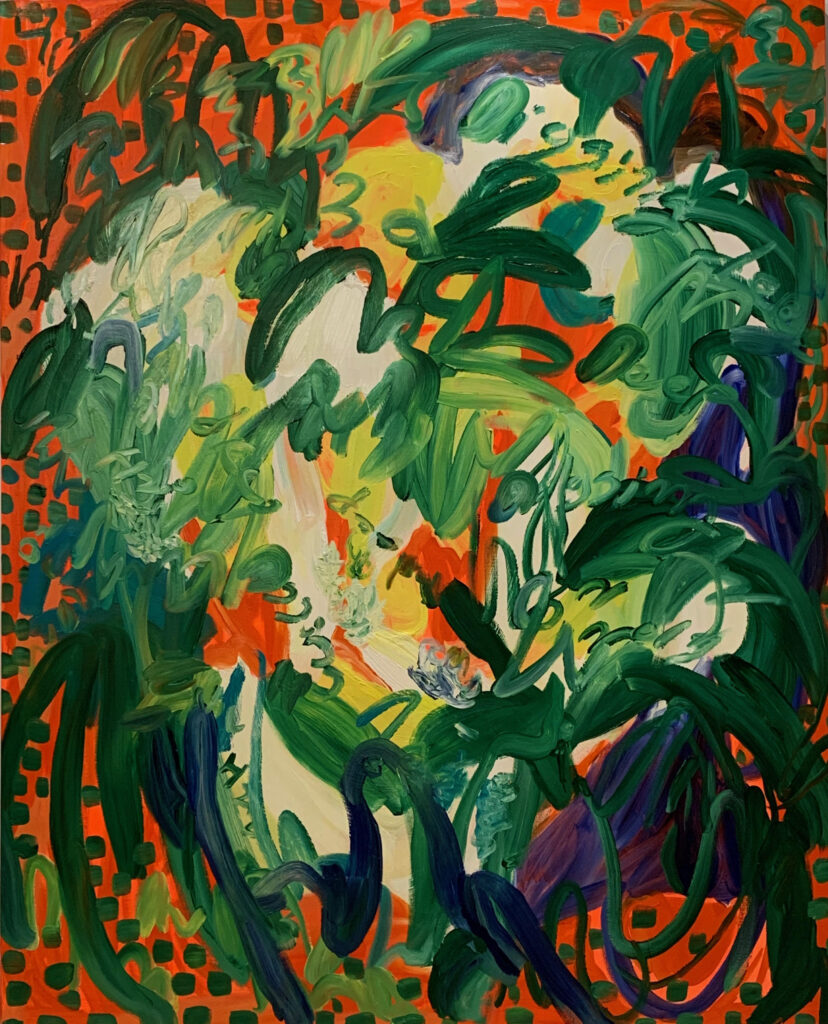
Why ‘Home’? How is each painting in this series reflecting your understanding of the concept of ‘home’?
I have a hand, this means the world exists; I have a home, this is the world, a body, a soul, a cell, a grain of sand, a macroscopic view of a piece of shard, a toy, a microscopic view of a house in sunlight, a rainbow, a dream, a family, love. A house is where you open your eyes, eat, drink, love, grow, live every day, and die. In language, home can be linked to various other words, expressing a full spectrum of meanings related to universal awareness, experience, materiality, and cycles – the fabric that makes up humanity and the surrounding world:
H: Human, Heliophilia, Helix, Habitat, Holes, Hybrids ~ etc
O: Observation, Omega, Om, Oology, One, Octopus, Obscura~ etc
M: Mother, Mental, Music, Meter, Mosaic, Mirror, Mountain~ etc
E: Earth, Esprit (Fr.), Eye, Eros, Embryo, Encircle, Encounter~~ etc
My ‘Home’ paintings are meant to trigger the viewers’ realisation of life as a whole, visualised as a ‘temple’ where the ritual is performed.
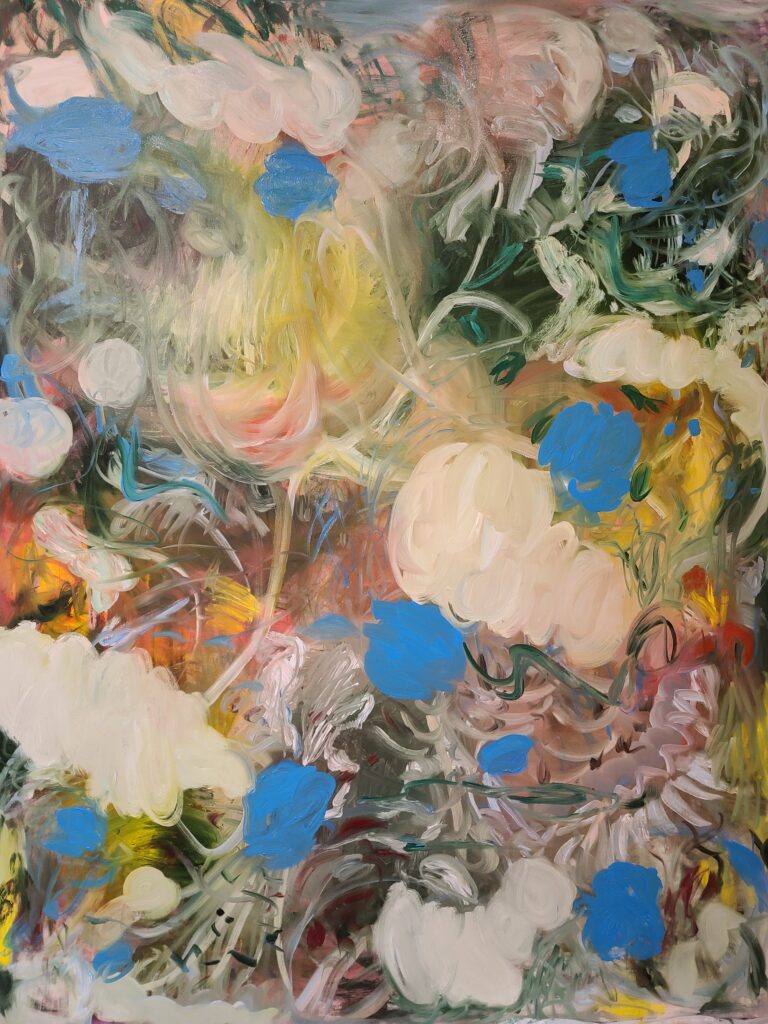
Within the paintings, I can see natural forms, including flowers. Perhaps also, body parts? Do these abstract paintings have a representational element?
The organic, the inner parts of our body, is a key element in most of my artworks. We are living organisms that breathe in and out, that grow and die, that react to the environment, just like plants and insects and animals and micro-organisms. The chemical mix – always changing – creating new life, new possibilities is what I capture in my own visual language as an artist. Body and soul are inextricably linked in my work and translated as abstractions of cells animated by layers of vivid colours though a gestural technique.
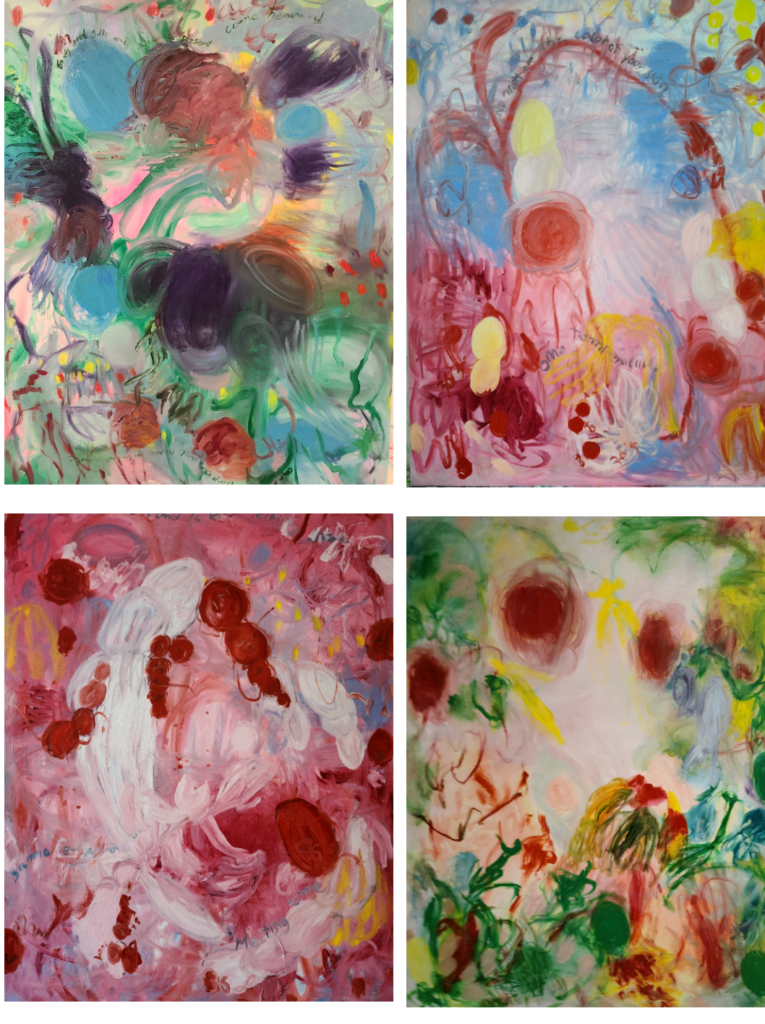
Can you tell me about the process of your painting? Do you allow for complete spontaneity or is there an element of control?
The large-size canvas is my dance floor, it reflects the inner movement of my eye, the free movement of my hand, the physical trace of my brushstrokes. These gestures are the debut of my performance. Getting further absorbed into the choreography of my senses and materials, strong shades of colour start to come out to the surface of the canvas. Up from the floor, out from the wall. It is the smooth transition from line to tache (fr). Feeling full, feeling alive through colour. The dance of nuances and rough shapes is now fully on the canvas, on the floor, on the wall, inside and outside myself. It gives and it demands sound, movement and gaze.
I understand you’re inspired by poetry, literature and philosophy. Which works have you been reading recently to inspire this series of paintings?
I am very much so. I’ve enjoyed reading Lumi’s poems since my early youth. I’ve also been very intrigued by the writings of Nietzsche, Heidegger and Wittgenstein and I’m trying to touch on some issues around language and existentialism through my own artwork.
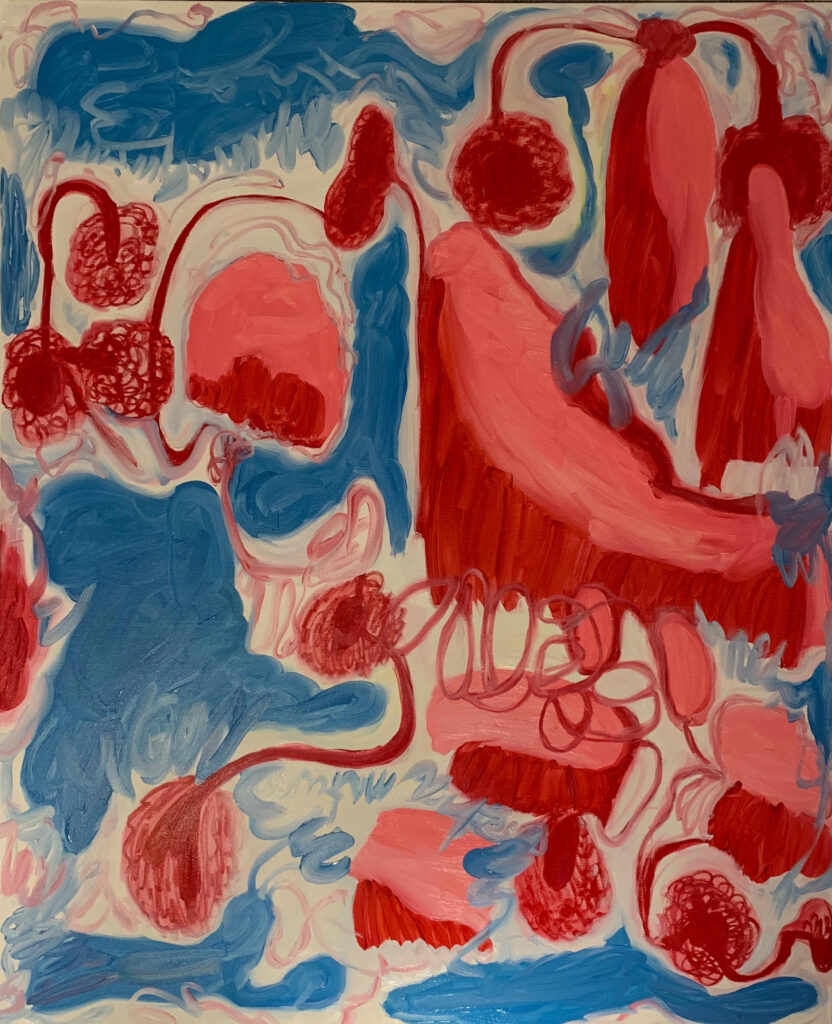
There’s an ‘action painting’ quality to the works. Which artists have influenced you? Any Abstract Expressionists?
I have been very struck by Eva Hesse’s purity of the form as well as her innovative approach of sculpture, introducing new materials such as latex and fiberglass. I also see the depth of Kusama’s use of the dot – a seemingly simple element of the visual language but so complex in connotations, the dot can symbolise the Sun, the circle’s perfection and sense of unity, the centre, the intersection point, and so on.
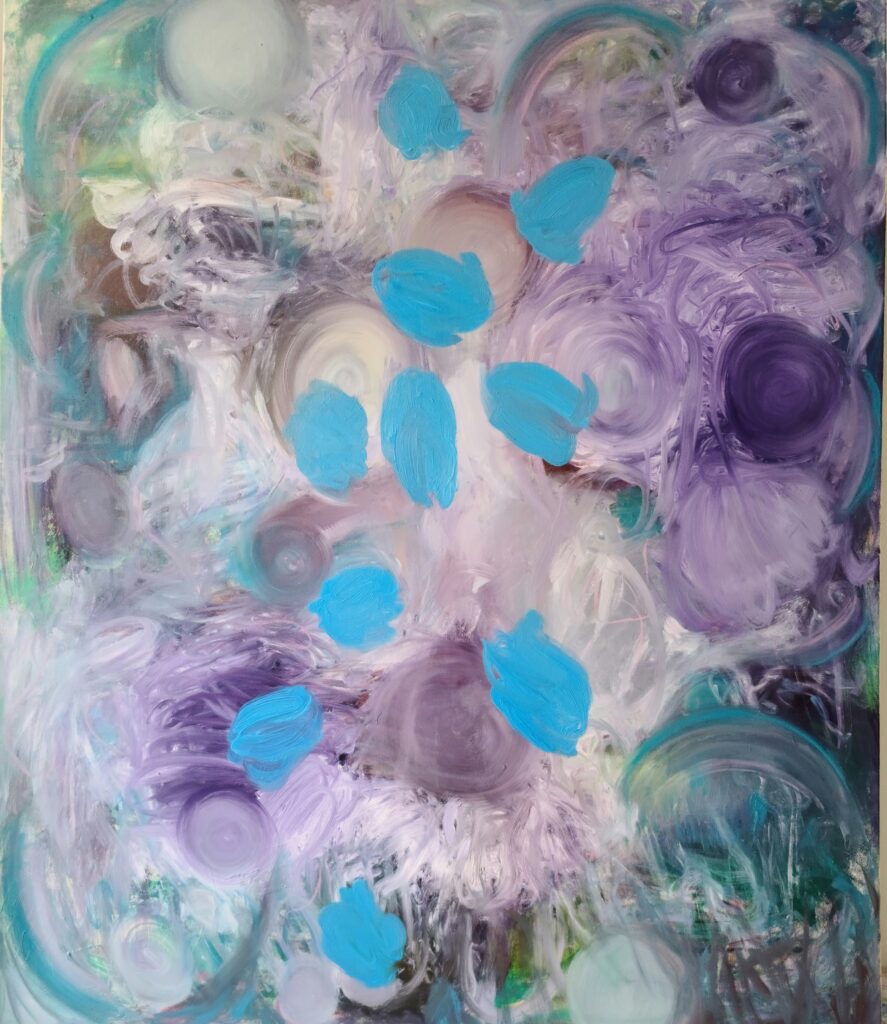
What is the purpose of making art, for you?
The idea of capturing some fleeting signals, some unseen, unknown energy has always fascinated me. It is an act of faith, not in a religious sense, it just a belief that things unseen are possible. As much as possible, I would like to produce my creativity through the invisible or intangible objects that surround our imaginations, when I am starring at a beautiful artwork made by others.
To learn more about Ceviga Frahm’s artworks, please visit her website and get in touch with her gallerist at [email protected]
You can see her work at Saatchi Gallery, as part of the 2020 START Art Fair (21-25 October)
